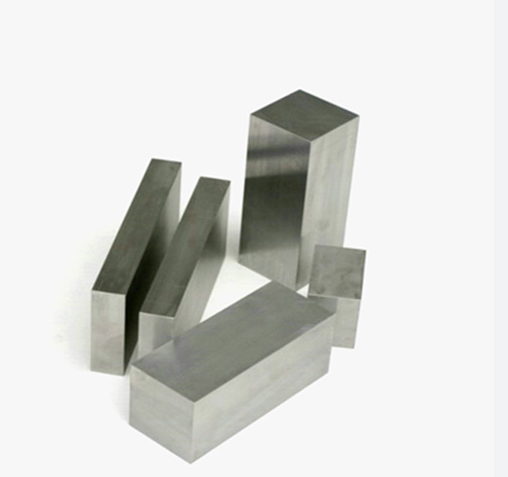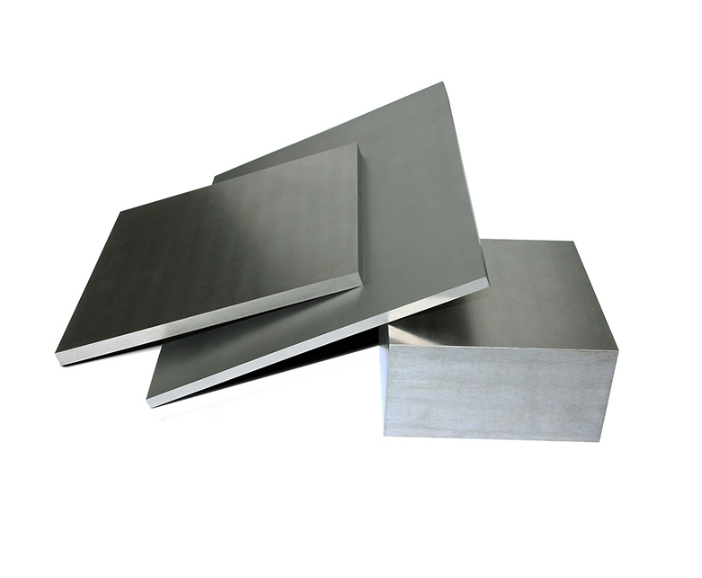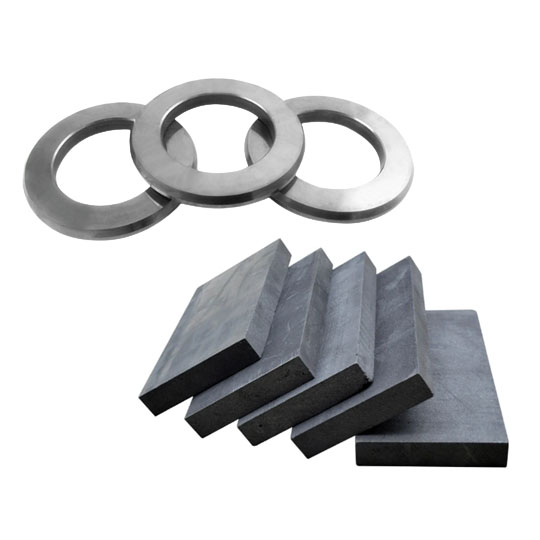Pourquoi Tiges en carbure Idéal pour les alliages aérospatiaux
Parlons maintenant du héros de notre histoire : les tiges en carbure. Imaginez-les comme l'équipe des opérations spéciales du monde de l'usinage. Il ne s'agit pas de mèches ordinaires ; elles sont conçues pour le combat, en particulier lorsqu'il s'agit de s'attaquer aux alliages aérospatiaux les plus résistants.
Le carbure de tungstène, le matériau utilisé dans ces tiges, est l'une des substances les plus dures sur Terre, après le diamant. Il est obtenu en mélangeant du tungstène et du carbone à des températures très élevées pour former un composé extrêmement dur et très résistant à l'usure.
Mais qu'est-ce qui fait qu'ils changent la donne ?
- Dureté supérieure: Parfait pour couper les alliages aérospatiaux tenaces comme le titane et l'Inconel.
- Résistance à la chaleur: Le carbure reste froid plus longtemps. Cela signifie moins d'usure de l'outil et des coupes plus précises.
- Stabilité dimensionnelle: Les tiges en carbure conservent leur forme comme un champion, même sous forte contrainte.
- Durée de vie plus longue de l'outil: Par rapport à l'acier rapide, les outils en carbure durent jusqu'à 10 fois plus longtemps.
Ainsi, qu'il s'agisse de fraiser avec précision une lame de moteur à réaction ou de percer un support de bouclier thermique, les tiges en carbure ne se contentent pas de survivre, elles prospèrent.
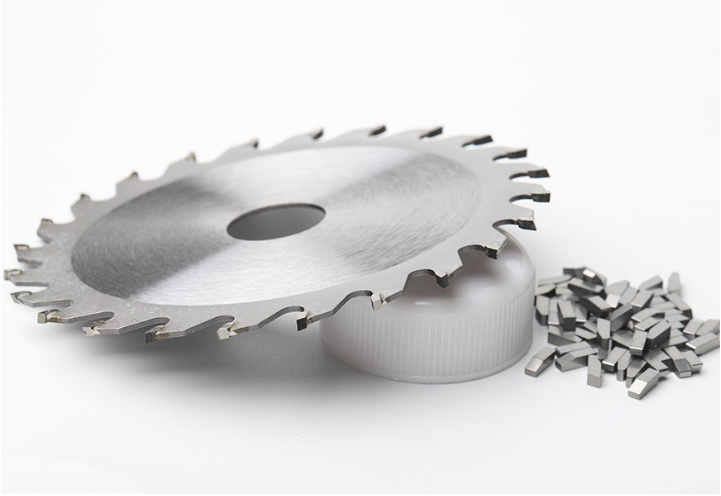
Choisir le bon Tiges en carbure pour les alliages aérospatiaux
Choisir la bonne tige de carbure ne consiste pas seulement à prendre le bâton le plus dur sur l'étagère. Il s'agit de connaître votre alliage, votre processus d'usinage et votre objectif final. Voici quelques facteurs clés à prendre en compte :
1. Composition du grade
Les barres de carbure existent en différentes qualités, en fonction de la teneur en cobalt et de la taille des grains.
- Grains submicroniques: Meilleur pour la finition à grande vitesse du titane et des alliages de nickel.
- Grain ultra-fin: Idéal pour le perçage et le fraisage avec des tolérances serrées.
2. Revêtements
Les revêtements sont comme une armure. Les barres revêtues résistent mieux à la chaleur et à l'oxydation.
- TiAlN (Nitrure de titane et d'aluminium): Excellent pour l'usinage à sec à des vitesses élevées.
- TiCN (carbonitrure de titane): Revêtement plus dur pour les coupes interrompues.
3. Type d'application
- Forage: Privilégiez une plus grande rigidité afin d'éviter les déformations.
- Fraisage: Choisissez des tiges équilibrées qui peuvent supporter des contraintes latérales.
- Tournage: Nécessite des tiges avec un excellent amortissement des vibrations.
4. Tolérance et rectitude
La précision est importante dans l'aérospatiale. Optez pour des barres avec une tolérance h6 ou supérieure. Croyez-moi, cela fait la différence.
Modèles de poudres métalliques spécifiques pour les barres de carbure utilisées dans les applications aérospatiales
C'est là que ça devient compliqué. Ces modèles spécifiques de poudres de carbure constituent l'épine dorsale de l'outillage aérospatial. Chacun d'entre eux apporte quelque chose d'unique.
| Modèle à poudre | Détails de la composition | Meilleure utilisation pour | Propriétés |
|---|---|---|---|
| WC-Co 10% Submicron | 90% Carbure de tungstène, 10% Cobalt | Découpe d'alliages pour l'aérospatiale en général | Haute résistance à l'usure, bonne ténacité |
| WC-Co 6% Ultrafine | 94% WC, 6% Co | Finition des alliages de titane | Haute rétention des arêtes, finition fine de la surface |
| WC-CoCr 12% | 88% WC, 10% Co, 2% Cr | Alliages haute température comme l'Inconel | Résistance accrue à l'oxydation |
| WC-Ni 15% | 85% WC, 15% Nickel | Environnements corrosifs | Haute résistance à la corrosion |
| WC-TaC-Co | WC avec carbure de tantale et cobalt | Composites abrasifs pour l'aérospatiale | Haute ténacité à la rupture |
| WC-CoTi 8% | WC, Cobalt, Titane | Coupures interrompues | Résistance aux chocs |
| WC-Co 5% Nano-Grain | WC avec des grains nanométriques | Découpe ultra-précise | Dureté extrême |
| WC-Co-V 12% | WC, 12% Co, Vanadium | Usinage polyvalent pour l'aérospatiale | Usure et résistance équilibrées |
| WC-Co-Al 8% | WC, Cobalt, Aluminium | Perçage à grande vitesse | Stabilité thermique |
| WC-Co-Cr 10% Séché par pulvérisation | Mélange aggloméré | Substrats d'outils revêtus | Haute densité, distribution uniforme des grains |
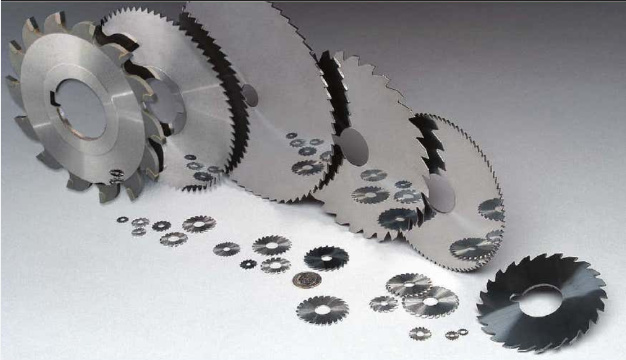


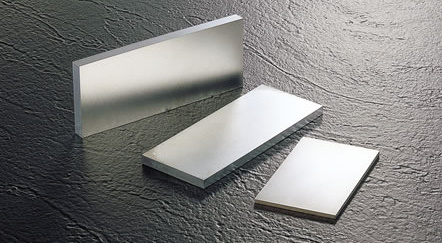
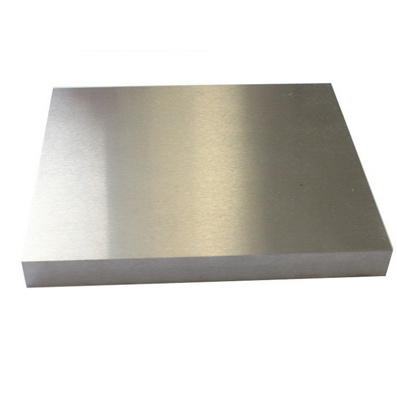
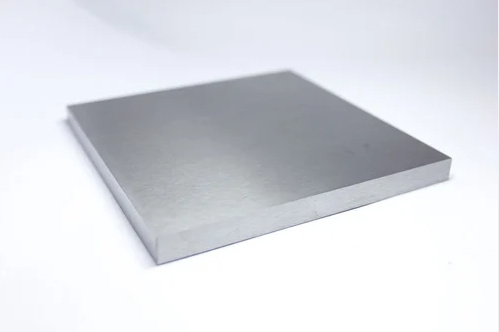
Tendances et innovations dans l'usinage aérospatial
La technologie de l'usinage n'est pas figée. Les exigences de l'aérospatiale évoluent, et les outils aussi. Voici quelques tendances passionnantes qui façonnent le jeu :
| L'innovation | Description | Impact sur l'usinage aérospatial |
|---|---|---|
| Barres hybrides céramique-carbure | Mélange de noyaux de carbure avec des couches de céramique | Tolérance à la température plus élevée |
| Outils à revêtement nanométrique | Revêtements nanométriques multicouches (comme l'AlTiN) | Durée de vie prolongée de l'outil, réduction de l'usure |
| Capteurs d'usinage intelligents | Capteurs intégrés dans les porte-outils | Retour d'information en temps réel et suivi de l'usure |
| Plaquettes en carbure imprimées en 3D | Des géométries complexes rendues additives | Formes personnalisées, moins de déchets de matériaux |
| Usinage cryogénique | LN2 utilisé pour le refroidissement | Coupes plus nettes, durée de vie prolongée de l'outil |
| Optimisation des parcours d'outils AI | Trajectoires de coupe optimales générées par l'IA | Gain de temps, meilleure finition de la surface |

FAQ
| Question | Réponse |
|---|---|
| De quoi sont faites les tiges de carbure ? | Principalement du carbure de tungstène et du cobalt, parfois avec des additifs tels que le chrome ou le tantale pour des propriétés spéciales. |
| Sont-ils meilleurs que l'acier rapide (HSS) ? | Oui, surtout pour les alliages aérospatiaux difficiles à usiner. Ils durent plus longtemps, restent plus tranchants et supportent mieux la chaleur. |
| Puis-je utiliser des tiges de carbure pour le titane ? | Absolument. Pour obtenir les meilleurs résultats, il convient d'utiliser des grains fins ou submicroniques avec un revêtement adéquat tel que le TiAlN. |
| Quel est le principal inconvénient ? | Ils peuvent être plus fragiles que l'acier, de sorte qu'une manipulation incorrecte ou des vibrations extrêmes peuvent provoquer des ébréchures. |
| Comment choisir le bon ? | Tenez compte de votre application : matériau, vitesse de coupe, environnement et type de machine. Ensuite, choisissez la granulométrie, la composition et le revêtement. |
| Quelle est la durée de vie typique ? | Cela dépend de l'utilisation, mais les outils en carbure peuvent durer de 3 à 10 fois plus longtemps que les outils traditionnels. |
| Le revêtement est-il nécessaire ? | Pas toujours, mais les revêtements améliorent considérablement les performances, en particulier à des vitesses élevées ou en cas d'usinage à sec. |
| Quel type d'entretien est nécessaire ? | Gardez les outils propres, surveillez leur usure et rangez-les correctement pour éviter qu'ils ne s'écaillent ou ne s'oxydent. |
| Puis-je affûter des outils en carbure ? | Oui, mais cela nécessite des outils de meulage au diamant et des machines de précision. |
| Qui sont les principaux fournisseurs ? | Des marques telles que Kennametal, Sandvik, Ceratizit, Mitsubishi et Seco dominent le marché en termes de qualité et d'innovation. |

